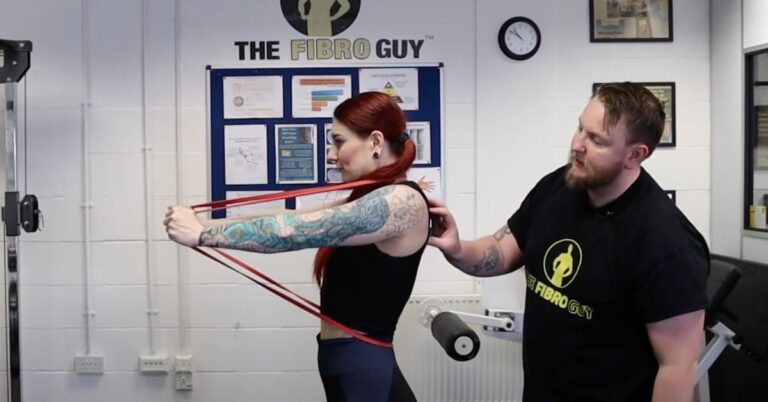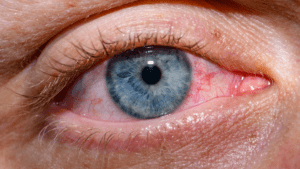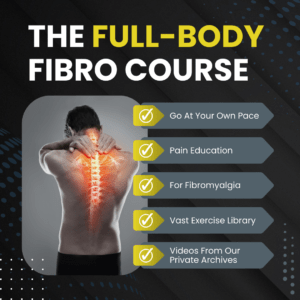
Breakthrough For Ehlers Danlos Syndrome and Endometriosis
If you live with endometriosis, you already know the drill. Debilitating period pain, exhaustion that knocks you sideways, nausea, bloating, heavy bleeding, some days, it feels
Book a consultation
Work with us and learn the framework
Start your journey
Living with chronic pain or hypermobility can feel overwhelming, with daily challenges that seem impossible to overcome. At The Fibro Guy, we’ve reimagined what rehab can be: supportive, effective, and built entirely around you.
Using our person-centered framework, we combine movement therapy, education, and a holistic approach that considers every aspect of you and the factors that affect you and your health. This approach has helped hundreds of clients around the world not only feel better but reclaim their independence and confidence.
We’re here for you with:
Your path to better health doesn’t have to be a battle. With our guidance, you’ll have the tools, support, and encouragement to rewrite your story and live the life you deserve.
For our clients who have chronic hypermobility:
Many approaches to hypermobile rehab focus on building muscle tissue around joints to stabilise them. However, this often leaves out a large part to the puzzle Read More To build muscle tissue, you need to overload the tissue with sufficient weight to break down and create new muscle tissue. But with unstable joints, you’re not able to use that amount of weight, and it can potentially cause injuries, as many people with hypermobility often find. People who go this route often end up with superficial strength, strong on the outside but lacking any fundamental stability. It’s like firing a rocket launcher from a rowing boat – there’s power, but no real foundation. Additionally, even with prime testosterone levels, the average male can only put on around 8-10 lbs of muscle tissue per year, body-wide and for biological females, that figure is even less. So then, why do some people with hypermobility, who do have large amounts of musculature, still dislocate? Well, it’s because muscle tissue is only one part of the equation to joint stability. Proprioception, your brains ability to know where your joints are in space and time, is the effect of many systems working together, and good stable movement is largely unconscious. Likewise, as paradigms shift, the research now shows that issues like proprioception and correct motor patterns are vitally important in helping to stabilise hypermobile joints. This is why when we work with our hypermobile clients, we look to these principals, focusing on good cortical representation of your joints, targeted proprioceptive movements, sequencing, and relearning how to use those joints, helping to predict what force is incoming and how to react to it, unconscious, effective, and stable movement.
For our clients who have chronic pain:
We take into account the complex interplay of biological, psychological, and social factors that influence a person’s experience of pain. Read More We use a biopsychosocial approach to helping our clients and call these factors your BPS bubbles. The Biological bubble includes physical factors such as genetics, sleep, joint mechanics, medical conditions, nociceptive threshold, hormones, and more that may be contributing to a person’s pain. The Psychological bubble consists of factors such as past traumas, coping skills, beliefs, emotions, anxiety, and other psychological elements that can compound the issue. The Social bubble considers factors such as support networks, work and home environment, cultural or societal factors, and other social aspects that can impact a person’s health. While other rehab programs may often rely solely on external “catalysts,” our framework recognises that these interventions may only be effective if a person’s BPS bubbles are set up in a specific way, as current research suggests. For example, a person with chronic back pain may try various exercises, but if they have factors in their bubbles that clash with the input of exercise, such as low tissue tolerance, poor oxygenation, or potentially issues like kinesiophobia, then exercise will not help with their pain. However, this does not mean that exercise will not help another person with different BPS bubbles. BPS bubbles are the reason why treatment often works for one person but not others, and by using BPS bubbles we aim to mitigate this as much as possible. We work with you to identify the underlying contributing factors in your BPS bubbles, rather than chasing symptoms or trying various exercises or methods that may or may not align with the client’s bubbles. By addressing a person’s BPS bubbles through a combination of targeted interventions and education, our aim is to give you the tools to focus on health in the right areas.

Berrie’s journey with hypermobility hasn’t been easy, but it’s one of hope and progress. In this video, Berrie and her mother share the challenges they faced, from daily joint dislocations to being bed-bound. Through working with us, Berrie has learned how to strengthen and stabilise her body and joints, manage her symptoms, and gradually reclaim her independence, including being able to finish school, and get back to water sports.

In 2020, we first opened our programme up online, as well as in person, and it’s proven to be incredibly effective. Our transition to complete 100% online programs in 2024, builds on that success, making our services more accessible than ever before. We’ve helped clients from all over the world improve their health and reclaim their lives: all through the convenience of Zoom.
You still get the same support, programme, and no time limit, just now from the comfort of your home.
After 6 months with Adam and the team, hypermobile Odin has achieved more than he imagined: sprinting for the first time in years and hitting big fitness goals like bodyweight squats and kettlebell swings. But the real magic? Learning to trust his body again and understanding how to manage pain. Curious how? Watch as Odin shares how Adam’s unique, fun approach pushed him to regain control without joint pain.
Catherine’s Transformation: A Year of Living Fully
Catherine shares her journey from being completely wiped out by fatigue to living a life filled with activity and strength. After working through the program, she’s now walking miles daily, paddleboarding, swimming, and embracing every challenge without fear. Reflecting on how far she’s come, Catherine speaks to the emotional support and guidance she received, helping her leave behind the limitations of her past.
If you’re ready to start your journey, we’re here to guide and support you every step of the way.

🎥 On our YouTube channel, we share straightforward, no-nonsense tips that actually help:
– Simple techniques to ease pain and discomfort
– Practical ways to build stability and confidence in movement
– Small, actionable changes that can make a big difference
No fluff, no gimmicks: just real advice that’s helped so many people already.

If you live with endometriosis, you already know the drill. Debilitating period pain, exhaustion that knocks you sideways, nausea, bloating, heavy bleeding, some days, it feels

Aging with Ehlers-Danlos Syndrome (EDS) is a bit of a paradox. For some, hypermobility decreases over time as we retain less and less water, but

If you’ve ever felt like your body is working against you when it comes to Ehlers Danlos syndrome and weight gain, then you’re not alone. I’ve worked

If you’ve ever been told you’re hypermobile, you might have felt a sense of relief at finally having a name for your symptoms and ongoing

The unpredictable nature of fibromyalgia is well-known to those who have been living with the condition. Your joints will ache one day. The following day,

People with fibromyalgia experience pain all the time, and it can be debilitating at times. When the pain is much worse than it should be,
.Explore Our Courses:
✅ Hypermobility 101: Build a foundation for strength and stability.
✅ KT Taping Course: Learn practical taping techniques for daily support.
✅ Full Body Fibro Course: Your DIY toolkit for movement, pain relief, and empowerment.

Whether you’re managing chronic pain, hypermobility, or just looking to move with more confidence, our expert-designed courses are here to guide you every step of the way
Copyright © 2024 The Fibro Guy™ All rights reserved